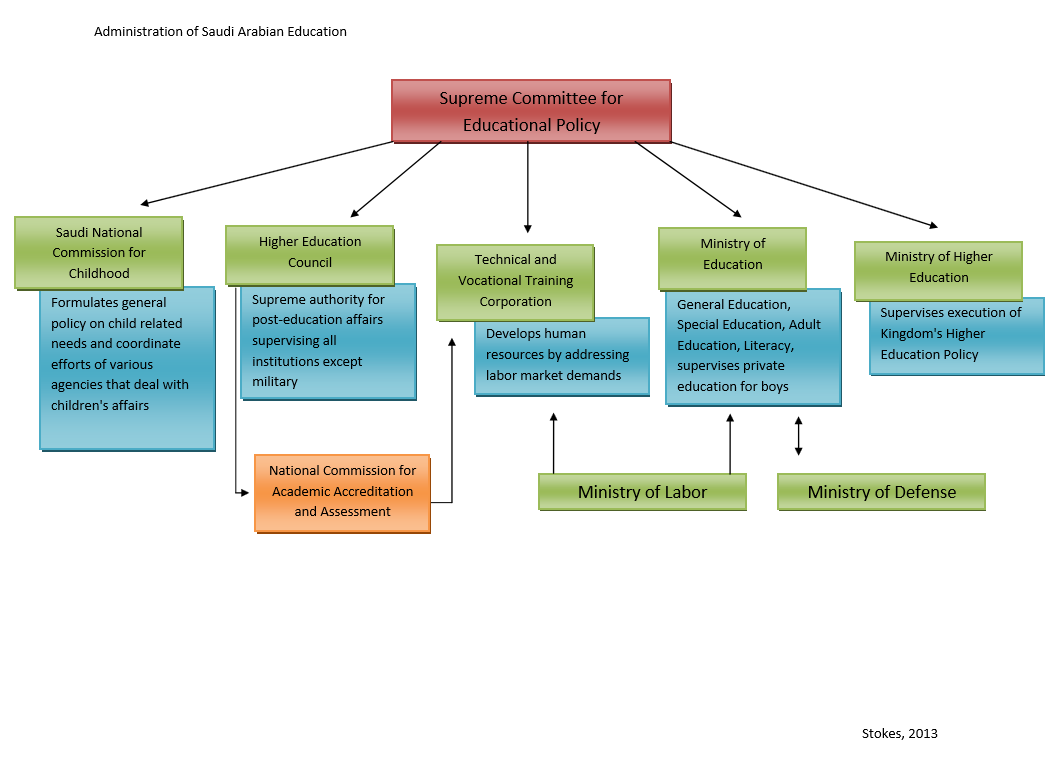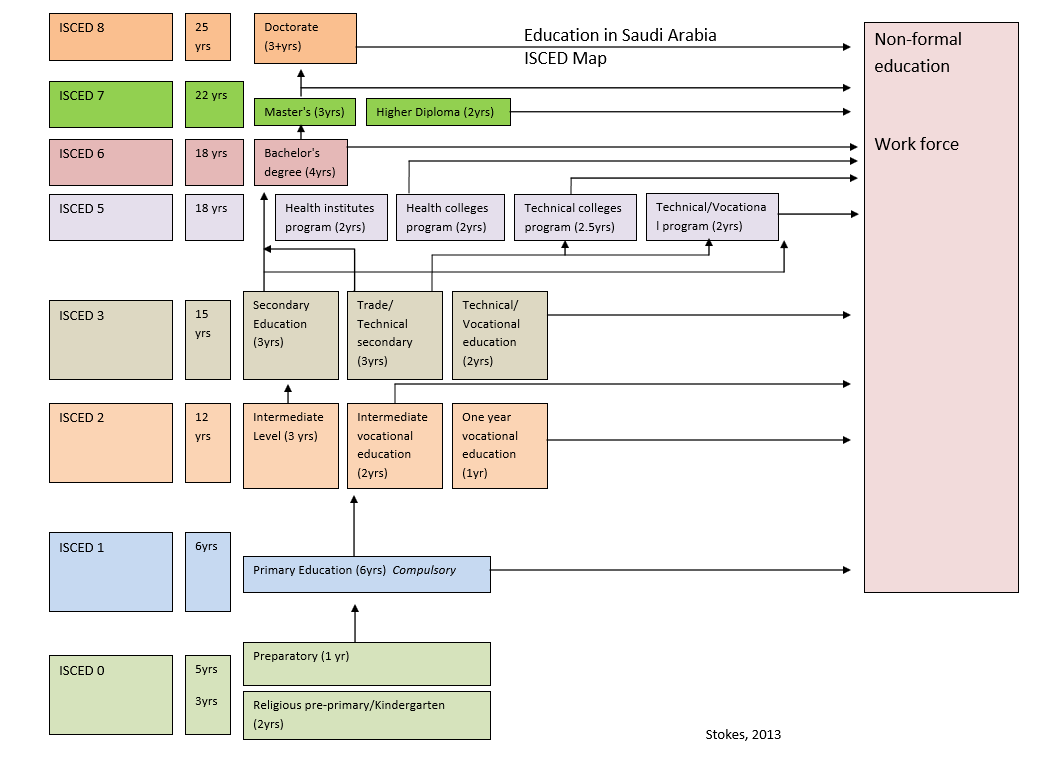In an effort to make comparing international educational systems easier, the International Standard Classification of Education (ISCED) was developed by UNESCO. Educational systems can be classified and compared with others by their various levels of education, and described through a map illustrating the country’s system. The standard was updated in 2011 (UNESCO, 2012).
ISCED map of Saudi Arabia’s educational system:
Sources: (UNESCO, 2008)
A six year compulsory elementary education is followed by three years of intermediate education and three years of secondary education. Students have the option of general or technical schools at the secondary stage. In their second year students choose tracks in either the industrial or literary fields in order to complete their secondary education. By doing so, students are also determining their options for higher education (Al-Khaldi, 2007).
Administration of Education:
The Saudi system of administration is highly centralized and overlapping between sectors occurs often, especially between the Ministry of Education and the Ministry of Labor. Even the Ministry of Defense plays a role in education (Al-Khaldi, 2007, Bertelsmann Stiftung, 2012). However the coordination is not necessarily efficient and ministerial communication is more top-down rather than collaborative (Bertelsmann Stiftung, 2012). Below is a chart visually outlining the structure and responsibilities of various entities involved in Saudi Arabian Education.
 Sources: (UNESCO, 2011, Al-Khaldi, 2007)
Sources: (UNESCO, 2011, Al-Khaldi, 2007)
Quality Assurance

The National Commission for Academic Accreditation and Assessment provides quality assurance for higher education institutions in the Kingdom. Universities must meet the 11 standards set forth by the Commission (UNESCO, 2011). Quality assurance efforts in the Kingdom are highly concentrated on post secondary education, thus the existence of the Commission under the umbrella of the Higher Education Council. For lower levels of education, responsibilities are assigned to the various ministries (UNESCO, 2011).



